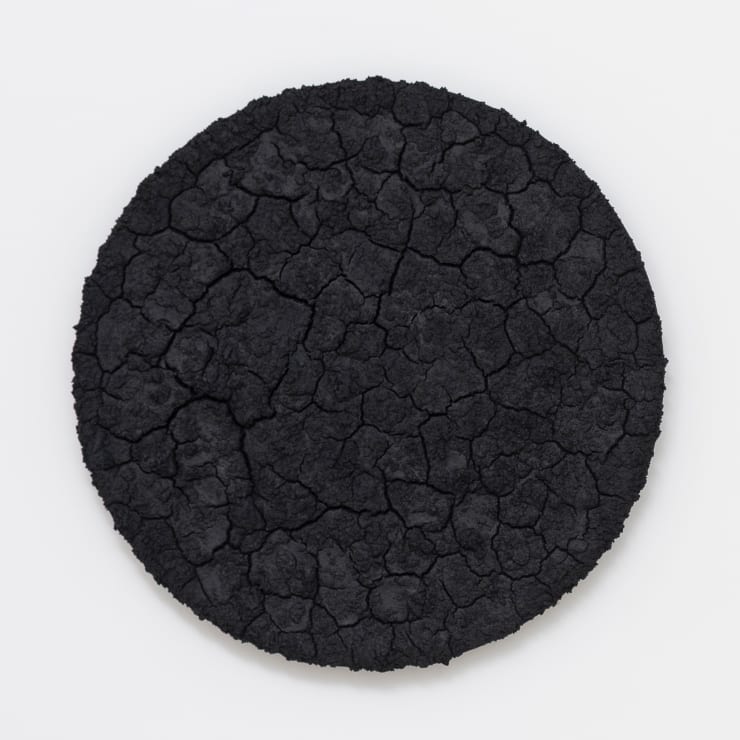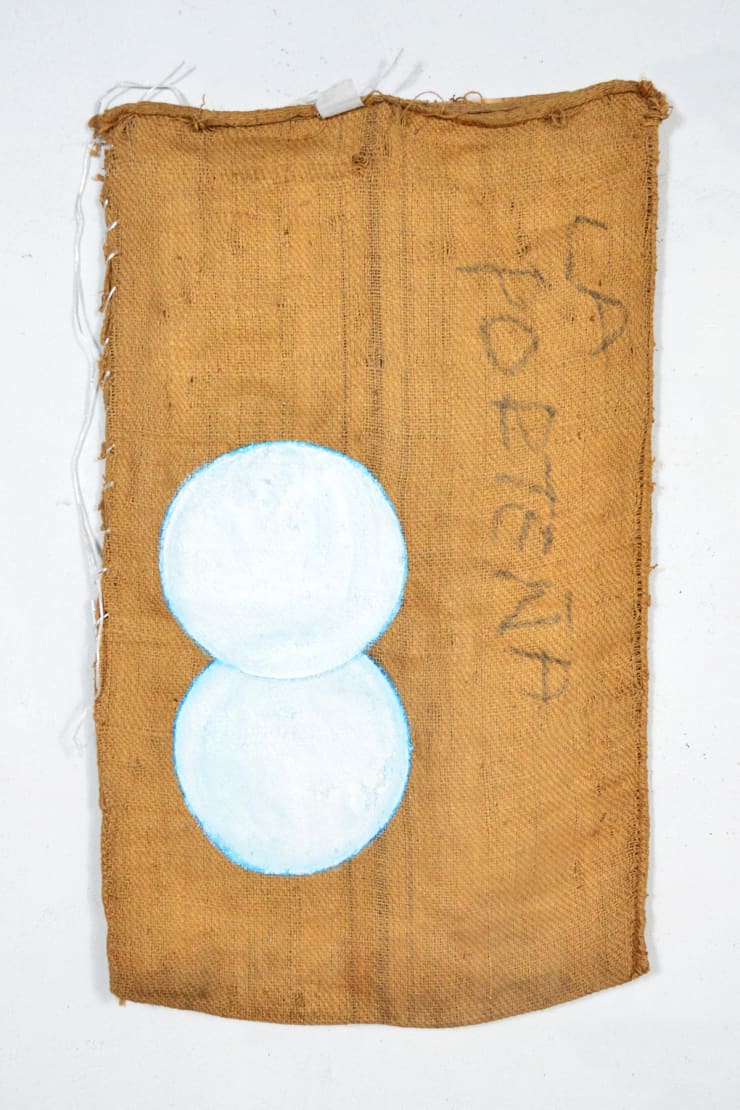-
-
“Curved Surfaces” [superfícies curvas] é o título da segunda exposição individual do mexicano Bosco Sodi no Brasil. A mostra, que acontece no espaço anexo da Luciana Brito Galeria, reúne um conjunto de obras que aborda a relação entre a arte e a sustentabilidade, além de abordar o conceito japonês “Wabisabi”, do qual aponta beleza na imperfeição. Um dos artistas visuais latinos mais importantes da contemporaneidade, Sodi apresenta uma pesquisa voltada para a potencialidade dos materiais de origem natural e dos conceitos e valores tradicionais latino-americanos. A mostra tem abertura no dia 2 de abril e segue com visitação até 14 de maio.
-
-
Esse entendimento do poder que envolve a transformação pela criação e pelo gesto através do que é natural, bem como da relação entre a matéria e o metafísico, não apenas conduzem a investigação artística de Sodi, como também sustentam as atividades da “Casa Wabi”. Projetada pelo famoso arquiteto japonês Tadao Ando, “Casa Wabi” combina a precisão da cultura japonesa com a beleza natural de Puerto Escondido, região litorânea de Oaxaca. Atualmente, o espaço abriga a Fundação Casa Wabi, um centro artístico sem fins lucrativos, referência em todo o mundo, que também oferece residências artísticas e atualmente também representa um importante agente social para a comunidade local.
A Casa Wabi serviu de refugio para o artista e sua família durante o momento mais crítico da pandemia. Durante esse período, o artista realizou uma série de pinturas denominadas “Sun Paintings” e “Moon Sack Paintings”. Ambas foram feitas a partir do que havia disponível na ocasião e substituiu as telas pela superfície áspera dos sacos de estopa usados para a armazenagem de pimentas, produto tradicional na culinária mexicana. Para as obras solares, Sodi pintou círculos em diferentes posições nas cores amarelo, laranja e vermelho, ao passo que as obras lunares carregam círculos escuros. As obras, que ainda carregam o aroma das pimentas, foram inspiradas pela própria paisagem da Casa Wabi.
A mostra apresenta, ainda, duas pinturas texturizadas inéditas. Realizadas com materiais orgânicos e pigmentos naturais, a partir de processos ininterruptos do artista, as pinturas assimilam as casualidades do imprevisto, tornando-se, cada qual, únicas.
-
-
SOBRE BOSCO SODI
1970, Cidade do México, México. Vive e trabalha entre Nova York, EUA, e Cidade do México, MéxicoA pesquisa de Bosco Sodi prima pela simplicidade de materiais de origem natural, como pigmentos, serragem, fibras, madeira, terra etc. A combinação desses elementos com a gestualidade de sua produção proporcionam um caráter excepcional a cada obra, além de atribuir uma conexão especial entre ele e sua prática de criação, que transcende o conceitual. Atualmente, e cada vez mais, sua produção utiliza técnicas antigas que, além de estabelecerem uma relação direta com o discurso etnobotânico, resgatam sua ancestralidade nativo-latino-americana. Bosco Sodi também associa essas técnicas a processos tradicionais e contemporâneos, dialogando com os movimentos land art e “informalismo”.
Apresentou exposições individuais em instituições consagradas como: University of South Florida Contemporary Art Museum, Tampa, EUA (2021); CAC Málaga, Espanha (2020); Royal Society of Sculptors, Londres, Inglaterra (2019); Museo di Scultura Antica Giovanni Barracco, Roma, Itália (2019); Mexican Cultural Institute, Washington, DC, EUA (2019); Museo Nacional de Arte, México (2017); The Bronx Museum, Nova York, EUA (2010). E coletivas: Harbour Arts Sculpture Park, Hong Kong (2018); The Museum of Modern Art, Gunma, Japão (2017) e Museo Espacio, México (2016), entre outras. A obra de Bosco Sodi também integra coleções importantes como Colección JUMEX (México), Harvard Art Museums (EUA), Museum of Contemporary Art San Diego (EUA), New Orleans Museum of Art (EUA), The Scottish National Gallery of Art (Escócia), Walker Art Center (EUA), entre outras.
-
-
Bosco Sodi: Curved Surfaces
English -
-
Curved Surfaces is the title of the second solo show by Mexican artist Bosco Sodi in Brazil. This exhibition, being held in Luciana Brito Galeria’s annex, features a set of works that deal with the relationship between art and sustainability, while also approaching the Japanese concept of wabi-sabi, which finds beauty in imperfection. One of the most important currently active visual artists from Latin America, Bosco Sodi investigates the potential of materials from natural origins coupled with traditional Latin American values and concepts. The show opens on April 2 and runs until May 14.
-
-
Bosco Sodi’s artistic investigation is guided by an understanding of the relationship between the material and the metaphysical, and of the transformative power of creation and gestures through what is natural. And this same understanding underlies the activities of Casa Wabi. Designed by renowned Japanese architect Tadao Ando, Casa Wabi combines the precision of Japanese culture with the natural beauty of Puerto Escondido, in Oaxaca’s coastal region. The space currently houses the Casa Wabi Foundation, a nonprofit artistic center, a worldwide benchmark that also offers artist residencies and acts as an important social agent for the local community.
Casa Wabi served as a refuge for the artist and his family during the most critical moment of the pandemic. During that period, the artist produced two series of works called Sun Paintings and Moon Sack Paintings. They were both made using the materials that were at hand at that time, the canvas being replaced by the rough surface of burlap bags used for storing chilis, a traditional product in Mexican culinary. For the works of the sun series, Bosco Sodi painted circles in different positions in the colors yellow, orange and red, while the moon paintings involve dark circles. The works, which still bear the fragrance of chilis, were inspired by the landscape surrounding Casa Wabi.
The show also presents two texturized paintings being shown here for the first time. Made with organic materials and natural pigments, subjected to uninterrupted processes carried out by the artist, each of the paintings bears unique aspects arising from the randomness of the unforeseen.
-
-
About Bosco Sodi
1970, Mexico City, Mexico. Lives and works between New York, USA, and Mexico City, MexicoBosco Sodi’s research is outstanding for its simplicity of materials from a natural origin, such as pigments, sawdust, fibers, wood, soil, etc. The combination of these elements with the gesturality of his production makes each work unique, while creating a special connection between the artist and his process of creation, which transcends the conceptual. Currently, he has been making increasing use of techniques from olden times, which not only establish a direct relationship with the ethnobotanical discourse, but also recover his native Latin American ancestrality. Bosco Sodi also associates these techniques to traditional and contemporary processes, dialoguing with the movements of land art and informalism.
He has presented solo shows at prominent institutions that include the University of South Florida Contemporary Art Museum, Tampa, USA (2021); CAC Málaga, Spain (2020); the Royal Society of Sculptors, London, England (2019); the Museo di Scultura Antica Giovanni Barracco, Rome, Italy (2019); the Mexican Cultural Institute, Washington, DC, USA (2019); the Museo Nacional de Arte, Mexico (2017); and the Bronx Museum, New York, USA (2010). He has participated in group shows at venues that include the Harbour Arts Sculpture Park, Hong Kong (2018); the Museum of Modern Art, Gunma, Japan (2017) and the Museo Espacio, Mexico (2016). Bosco Sodi’s work is also part of important collections such as Colección JUMEX (Mexico), the Harvard Art Museums (USA), the Museum of Contemporary Art San Diego (USA), the New Orleans Museum of Art (USA), the Scottish National Gallery of Art (Scotland), and Walker Art Center (USA).
-
Bosco Sodi: Curved Surfaces
Past viewing_room

























